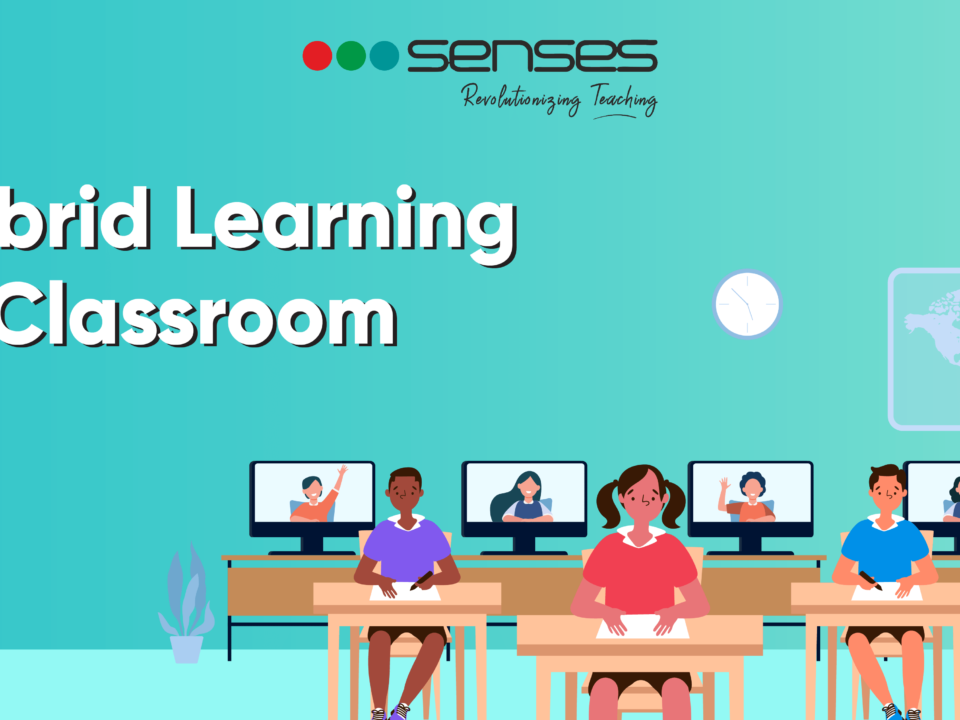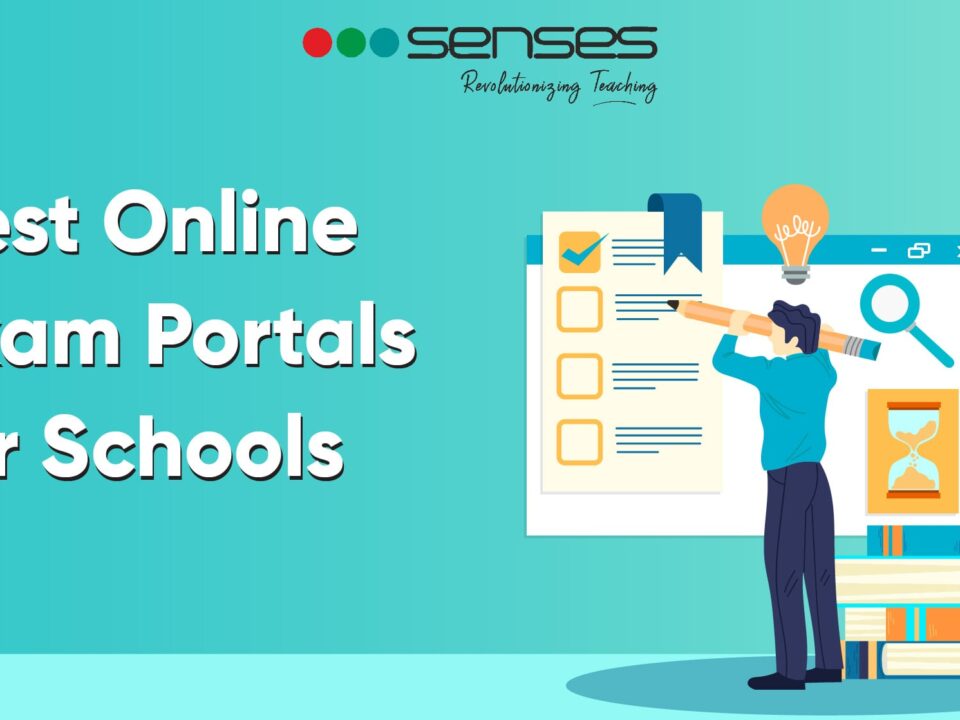AR (Augmented Reality) and VR (Virtual Reality): The Future of Education
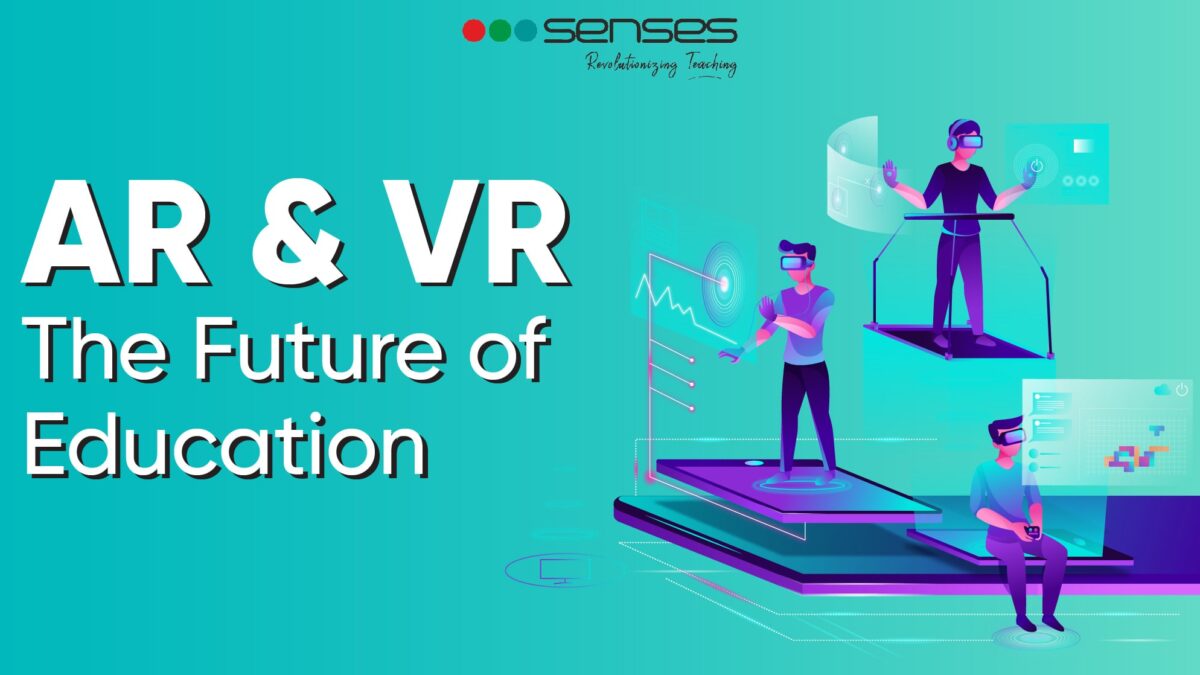
Imagine you’re teaching your students about the solar system in class. They are watching the planets come alive on their tablet screens, moving around them, or taking a virtual spaceship ride through the solar system. They’re gaining a close view of planets instead of looking at pictures in a textbook. They enjoy learning and grasping concepts more efficiently with AR and VR technology– the future of education.
As a teacher, you probably want your students to be interested in learning, and surely, you want to know more about AR and VR in education.
Don’t worry—you have landed in the right place. Here, you will learn everything about AR and VR technology.
What is AR and VR in Education?
AR (Augmented Reality) and VR (Virtual Reality) are extended reality (XR) technologies that have the potential to transform the education system like never before. This technology offers a new way of learning by actively engaging the students in classroom activities and letting them explore concepts and theories in depth. AR and VR in the education system make learning fun and exciting.
Multiple institutes such as Bennett University, Chitkara University, IIT Bombay, IIT Delhi, IIT Madras, etc., provide an AR/VR learning environment and contribute to shaping the future of education and the AR/VR field. Let’s read this blog together to understand AR and VR in education better. But before that, let’s gain insights into the benefits of AR VR in education.
Benefits of AR and VR in Education
There are several benefits of AR and VR in education. Some of them include:
- AR/VR applications allow for learning in the classroom with the visualisation of concepts.
- According to ICARS 2023, AR/VR learning can enhance students’ engagement, foster deeper comprehension of complex concepts, and improve learning outcomes.
- Adopting VR AR in education today can train students to be ready for the future and adept at dealing with upcoming cutting-edge technology.
What is AR (Augmented Reality)?
Augmented reality is a modern technology that overlays computer-generated elements such as sounds, images, and text onto the real world. AR adds digital information to a live view. You can experience it using your latest mobile or tablet camera without additional equipment.
How to Experience AR?
Mobile phones like the Samsung Galaxy S23 series, Google Pixel 7, 7 Pros, iPhones, etc., are equipped with AR technology. To experience AR:
- You need to install ARCore on your Android device or ARKit on iOS devices for an AR experience. However, if your phone doesn’t support ARCore or ARKit, you can directly search for AR apps.
- Open the app and point your camera where you want to see Augmented Reality. In AR apps, you can find various virtual elements in live view.
You can move the virtual object around, listen to voices, and immerse yourself in this adventure.
Have you never tested it? Don’t hold back. Go to the Play Store or iOS Store, download any app that supports your device, experience AR, and then come back to read further!
How to Use AR in Education?
Now that you know what Augmented reality is and how it offers a unique experience, you may be wondering how it will change the landscape of education or how you could leverage AR to teach your students.
With AR technology, schools and teachers can provide interactive, engaging and immersive learning experiences. For example:
- Using AR apps, teachers can display 3-D models of historical landmarks.
- Students can scan pictures/diagrams with AR apps to access additional textual information, animations, diagrams, etc.
- Advanced AR apps, you can observe the lifecycle of animals, and watch planets in the solar system, or perform other such activities.
However, when integrating AR into the classroom, it’s important to select the right app. The chosen app should be age-appropriate, aligned with curriculum, and help achieve your teaching goals.
How to Use AR at Large Scale While Educating the Students?
It might be challenging to leverage AR for all students simultaneously using mobile phones or tablets. You can use your classroom’s interactive intelligent panel to tackle such situations.
However, the panel must be equipped with a high-quality movable camera and, if possible, a LiDAR scanner for a seamless activity, as AR apps rely on the camera to capture the natural world and overlay the digital elements on top. Moreover, the panel should be touch-enabled and have an Android operating system for a smooth AR experience.
Touch-enabled panels make the classroom session collaborative for each student. Using the panel camera, you select a space in your classroom where you can create a virtual environment. You can ask your students to come to the panel, touch it, move, and learn the chapters with audio-visual medium and live interaction.
What is an Interactive Intelligent Panel?
An interactive intelligent panel (IIP) is an advanced version of a black or whiteboard that includes internet connectivity, smart writing and erasing options, AI features, 3-D models, direct browsing, and numerous tools to make classroom learning engaging, interactive, collaborative, and experimental. Senses is a leading manufacturer of interactive panels. To learn more about Senses IIP, click here.
Challenges with AR in Education
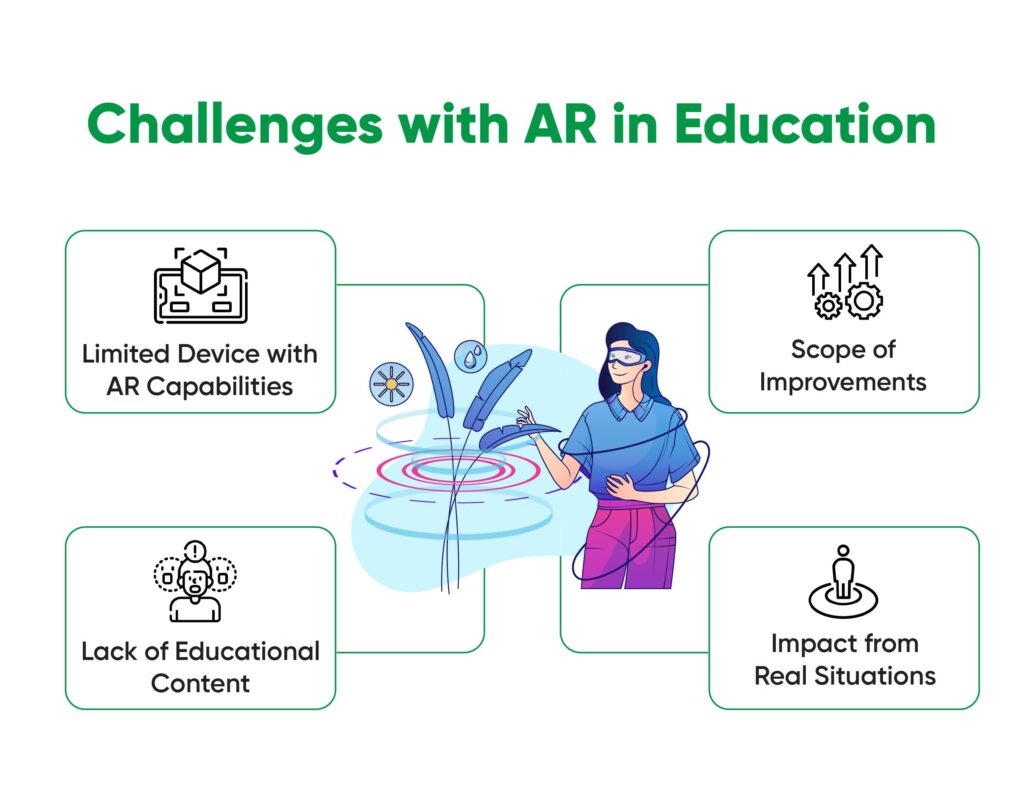
Limited Devices with AR Capabilities—Only a limited number of devices are available that provide a seamless AR experience. If you want to buy any device to experience AR, ensure it supports AR.
Scope for Improvements—AR apps have room for improvement. The app’s user interface /user experience can become clunky, and sometimes, locating objects in the right place becomes difficult.
Lack of Educational Content—The educational content in the AR ecosystem is insufficient. However, the content in the AR ecosystem will increase in upcoming years and has the massive capacity to transform the education system.
Impact from Real Situations—Poor lighting, reflective surfaces, complex environments, and other factors can impact the AR experience. Moreover, AR’s reliance on cameras and sensors might raise potential privacy concerns.
However, these challenges can be modified and improved in the near future by embracing the development of AR.
What is VR (Virtual Reality)?
Virtual reality is a significantly more advanced technology that creates an entirely virtual world with a three-dimensional environment. Unlike augmented reality, which adds virtual objects to the real world, virtual reality completely replaces the surroundings. In virtual reality, you can feel objects, listen to sounds, and interact with virtual characters, thus completely escaping the real world.
By sitting in the VR-equipped classroom and wearing special VR headsets, you can walk on the sea, visit forests, observe animals, and engage in numerous activities that are likely not possible in your current surroundings.
How to Experience VR?
To experience VR (virtual reality), you will require a powerful computer connected to a VR headset that will block out your surroundings and offer you a completely different experience. You can also use a mobile VR headset to get the VR experience with the mobile. Mobile VR offers limited experience.
To experience VR:
- You can download high-quality VR apps or VR games from app stores or VR platforms.
- Connect your device with VR headsets for a VR experience.
Ensure that the app and the headset you buy for the VR experience are of high quality.
How to Use VR in Education?
VR holds immense possibilities in the education system. With it, you can create engaging, collaborative, and advanced sessions for your students. In these sessions, your students will not only learn but also experience the concept. They will witness each activity and gain a deeper understanding of the subject.
In education, you can use VR technology to provide experimental learning to your classroom in numerous ways:
- Students can conduct experiments in a virtual lab.
- Students can meet historical figures and engage in conversations with them.
- You can take your students on virtual trips to historical places, natural wonders like the Great Barrier Reef, and other spaces.
By integrating VR simulations, schools and educators can completely transform the education system. Students will understand the theories deeply and be better prepared for the future.
How to Use VR at Large Scale While Educating Students?
Considering current developments, integrating VR into the classroom with powerful computers and headsets can be costly. However, schools can explore alternatives such as mobile VR headsets and cloud-based VR platforms to provide students with VR-based learning experiences. Schools can also establish VR labs equipped with multiple headsets to facilitate virtual learning within the classroom.
Schools must ensure that they have a technical support team in place and that teachers are trained in using VR technology. Additionally, they must also take care of students’ well-being while they engage in virtual reality experiences.
Challenges Associated with VR in Education
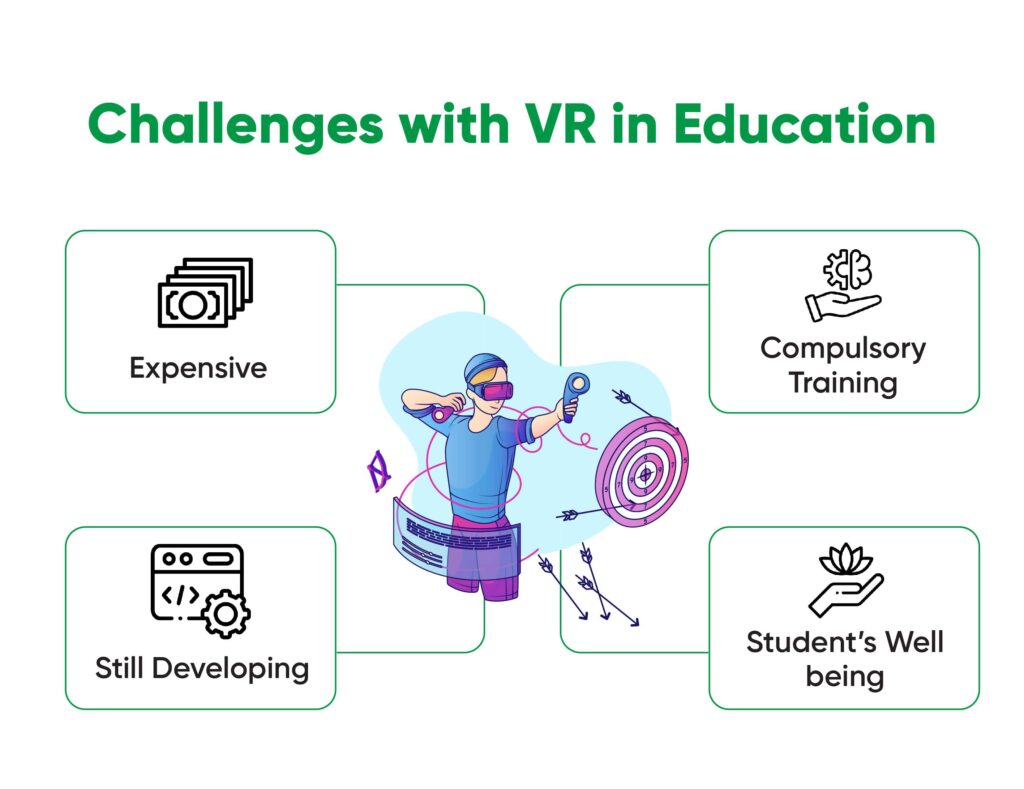
Costliness—VR technologies are super expensive. Schools require significant investments in infrastructure, headsets, and computing resources.
Development Stage—VR is still in the development phase, resulting in limited availability of high-quality educational content. However, it holds immense potential to revolutionise the education system in the future.
Training Requirements—Teachers will need extensive training and ongoing support to effectively integrate VR into their lesson plans.
Student Well Being—Some students may experience motion sickness and develop addictive tendencies towards VR. Monitoring students’ experience in virtual reality environments can be challenging.
With adequate training and widespread development, VR’s accessibility will improve, rendering it a powerful tool for educators.
Conclusion
AR and VR are two prominent technologies that can change the future of education. By addressing current challenges, AR/VR will create an entirely different education ecosystem in the upcoming years. Schools that adapt to these changes and teachers who are evolving their skills will sustain and lead the education system.
To be part of this emerging education and technology development, Senses Electronics offers Sense Pro, an intelligent interactive panel equipped with a dual operating system – Android + Windows, high-quality audio-visual systems, AI features, Sense cam, advanced tools, and more to transform the classroom teaching and learning with interactive, engaging, collaborative and experiential learning.
Would you like to learn in detail how the Senses interactive panel can help enhance your teaching methodologies in the classroom?
Schedule a personalised demo at your place.
Alternatively, you can watch the virtual demonstration of the Senses panel through YouTube videos.
Senses intelligent interactive panel for corporate – 2022Demo
FAQs Related Senses Interactive Panel
What is AR & VR?
AR is augmented reality that overlays digital elements with a live view using a camera/sensor through an AR app. VR is a virtual reality that completely blocks the physical world and takes you to a new 3-D world.
Is VR Good for Education?
VR has immense potential to bring massive change in the education ecosystem and provide students with an engaging and experiential learning environment.

